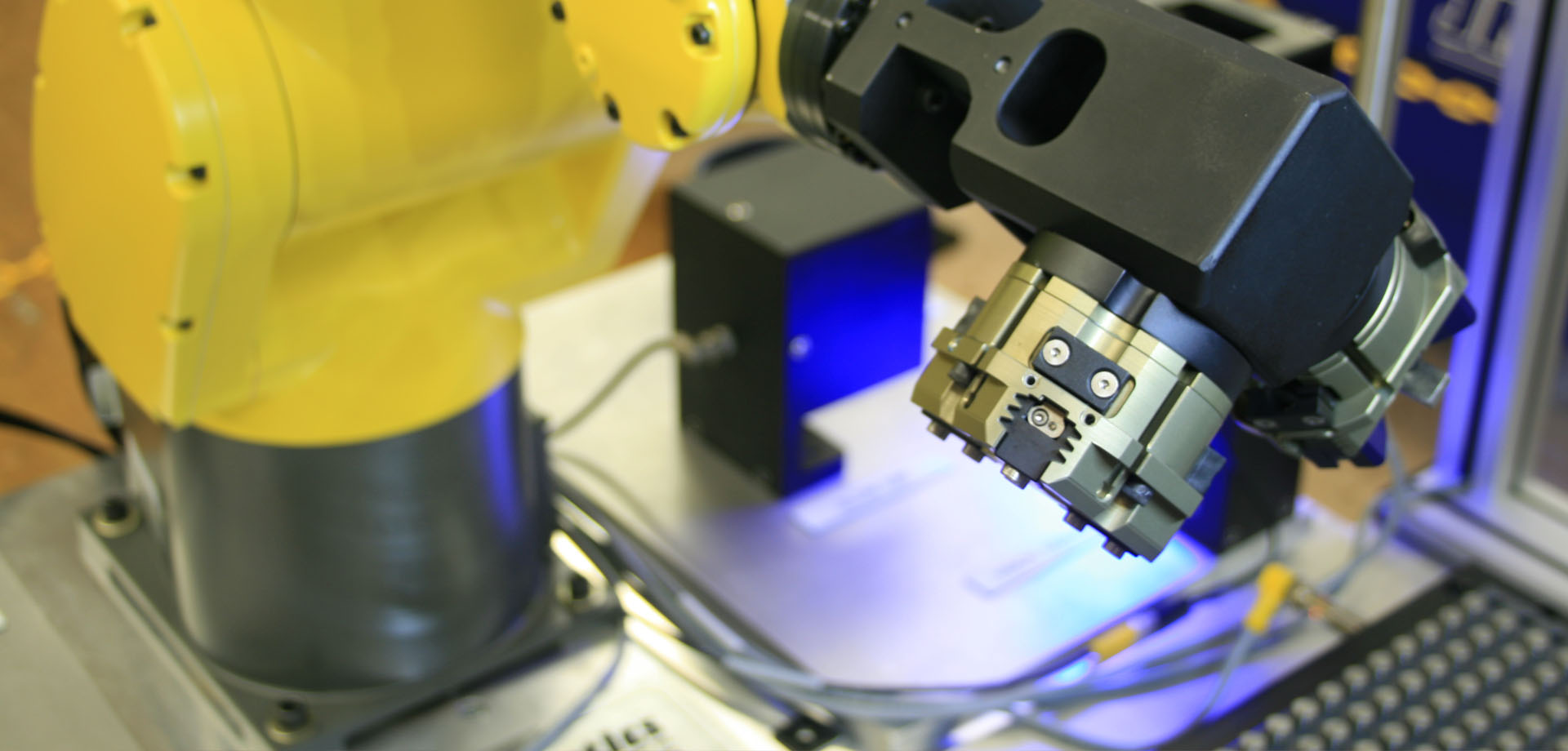Check out the latest innovative robotics integrations and be sure to request an integration estimate today to learn how we can transform your facility by reducing costs, increasing output, and shortening production times.

Dual JHR-150 Machine Tending System | FANUC Robot Pre-engineered Robot Systems
1st Operation Robot picks blank part from input tray, loads part into gripper on cross-slide then unloads the finished 1st Operation part from the chuck. Gripper on cross-slide loads part into chuck oriented axially with respect to the gear teeth and with minimal loading clearance. Robot on 1st Operation machine hands off semi-finished part to robot on the 2nd Operation machine to eliminate operator handling between 1st & 2nd operations. 2nd Operation Robot takes semi-finished part from hand off and proceeds to unload the fully finished part from the ID chuck and then load the semi-finished part for the 2nd Operation turning cycle. Fully finished parts are placed on an output tray in the 2nd Operation machine.

Collaborative Robotic Palletizing Cell for New Hope Mills
Collaborative Robotic Palletizing Cell for New Hope Mills built and installed by JH Robotics.

AUTOMATED LITHIUM BATTERY ASSEMBLY SYSTEM
Automation system designed to handle lithium batteries from shipping box to final fixture insertion. Automated voltage check, barcode scanning and "labeling" of each cell is performed in the first robotic cell. Automatic insertion of each cell using FANUC force control and FANUC iRvision verification of polarity and presence is performed in the second robotic cell.

JHR-100 MACHINE TENDING SYSTEM INTEGRATED TO DOOSAN LYNX 2100
JH Robotics new family line of machine tending robots are designed to be cost competitive, with shorter turn-around time, and versatile in any atmosphere. The JHR 100 is shown at base price and have multiple options to add and choose from.

Back-to-back MTL 150 Automated Machining
Back-to-back automated machine tending featuring two MTL-150 cells for OP10 and OP20 operations. A two pallet input/output system allows for continuous operation. Call 800-826-8069 to learn how we can help you increase production and lower costs by integrating automation into your facility.

JHR-150 Machine Tending Robot
JH Robotics JHR-150 System is a Pre-engineered, Top-Mounted Robotic Machine Tending System Featuring the FANUC LR Mate 200iD Six Axis Robot. This system is one of the most integrated and versatile automation set-ups for manufacturers looking to streamline their production.

Sidekick CR7 Collaborative Robot
A Pre-Engineered Collaborative Robot Machine Tending System featuring the FANUC CR-7iAL six axis collaborative robot.

Multiple MTL-150 Machine Integrations
JH Robotics was approached by a long-time customer wanting to increase part production in a big way.
JH Robotics engineered a three cell solution which featured three of our MTL-150 machines working in unison to boost production, decrease part rejection, and operate lights-out. The resulting installation allowed the customer to keep up with demand and stay on schedule with production.

JH Robotics helps a firearms manufacturer increase production capabilities
Federal regulations require a firearms company to test fire each gun it manufactures. This process requires a constant demand for loading magazines along with routine maintenance and tedious hand assembly. JH Robotics designed and completely tested a system for a major firearms manufacturer that will load magazines for all pistol rounds and 22 rifle rounds.
The automated solution we custom built for this customer leverages efficiency and ease of operation to load trays full of magazines while being completely unattended. The cycle time per magazine (any size) is less than 30 seconds. Changeover between magazines is as easy as loading the magazine and bullet trays into the cell and pushing the button. Learn more about firearms manufacturing automation.
- < 30 second cycle times
- Design can be modified to accommodate test firing
- Automation eliminates faulty loading
- Customer ordered a second unit in order to keep up with production
- Multiple installation can be run by 1 operator


